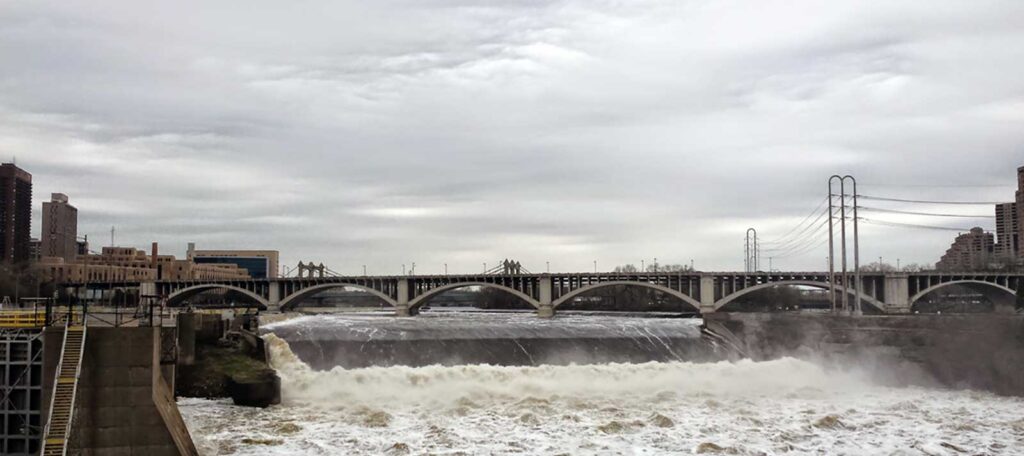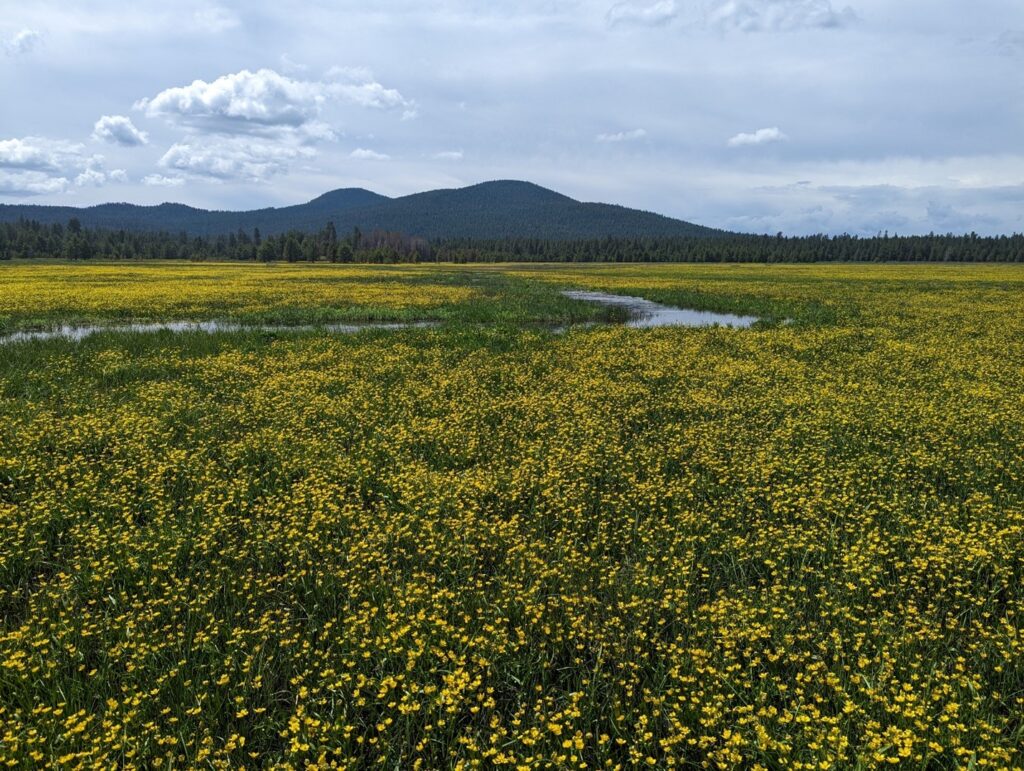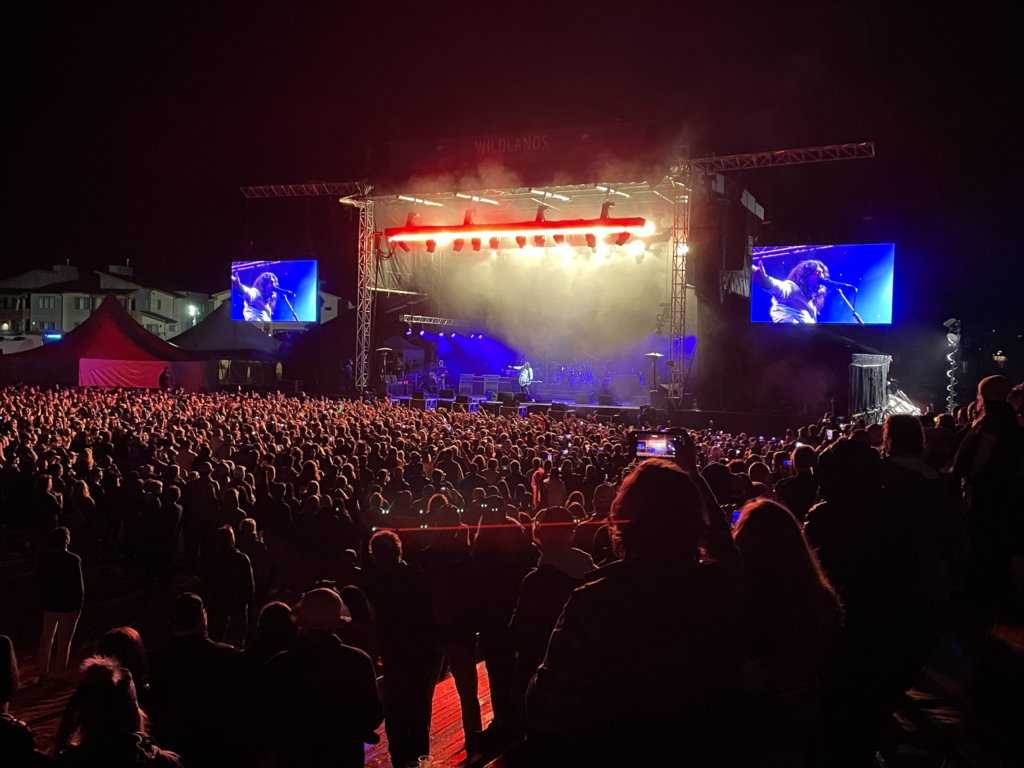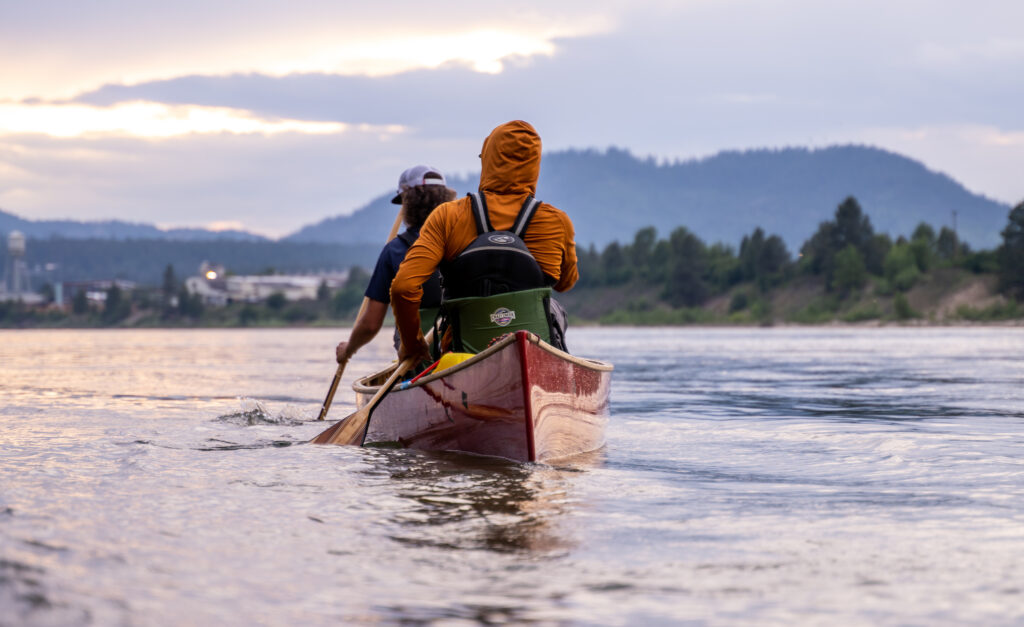
The Upper St Anthony Falls Lock closure is inspiring a lot of imagination as citizens, planners, and non-profits try to dream up a new Minneapolis riverfront. Some of the ideas were voiced at a visioning meeting in Minneapolis a few weeks ago at Mill City. My personal favorite vision: Restoring the Mississippi River Gorge.
Historically, St. Anthony Falls was the head of a six mile stretch of rapids that was a rich spawning ground for native fish capped by a 50 foot waterfall that served as a natural barrier to northern migrating fish. But parts of the rapids were flooded when the Ford Dam (Lock and Dam 1) was constructed in the early 1900s, making St. Paul the head of Mississippi River navigation. And, jealous of St. Paul’s river navigation prowess, Minneapolis built Upper and Lower St. Anthony Falls Locks and Dam in the 1960s, completely flooding out the rapids.
What’s standing in the way of restoring the rapids today? The question of whether those dams are still relevant.
With the closure of Upper St Anthony Falls Lock, the three commercial barge destinations above Lock and Dam 1 are now also closed. While recreational boats still use the locks, they probably won’t be busy enough to be relevant for navigation purposes, especially since there is a massive outreach campaign by the Stop Carp Coalition to discourage recreational lockages in order to prevent the spread of invasive carp.
And speaking of carp, are dams really the best defense against advancing carp? Maybe in the short-term, but research shows that the dams on the Upper Mississippi River and Illinois Waterway may actually promote the establishment of invasive carp.[1] Many ecologists will tell you that the best defense against invasive species is robust natural habitat filled with native species. But unfortunately, the Mississippi River in Minneapolis is far from natural.[2] Restoring the Minneapolis Gorge, completing the waterfall, and restoring all the magnificent rapids may be a better barrier against invading carp.
Aside from being a wall to invasive carp, the Ford Dam also facilitates hydropower – a renewable energy source. But, the hydropower facility may not be economically viable if the Corps of Engineers stops subsidizing the dam.[3] The federal permit to operate hydropower on the Corps’ dam expires in 2034. With river traffic on the decline, it’s likely that the Corps will determine that the dam is no longer in the federal interest before then. When that happens, the Corps will no longer subsidize the operations and maintenance of the dam, which hurts the economics of hydropower generation. The private energy company that operates the hydropower project will be solely responsible for maintaining the old dam. It’s not clear if the private energy company will be interested in taking on the responsibility for maintaining this old dam, which receives an $1.24 million annually subsidy[4] from the Corps for only 17.92 megawatts generating capacity.
So, the infrastructure might not be economically relevant for much longer. What then? American Rivers hopes that the beautiful rapids of the Mississippi River Gorge will one day be flowing again through Minneapolis.
[1] Hoff, Michael, Mark Pegg, and Kevin Irons. 2011. Management Implications from a Stock – Recruit Model for the Bighead Carp in Portions of the Illinois and Mississippi Rivers. American Fisheries Society Symposium 74:5-14.
[2] O’Connel, Martin, Ann O’Connell, and Valerie Barko. 2011. Occurrence and Predicted Dispersal of Bighead Carp in the Mississippi River System: Development of a Heuristic Tool. American Fisheries Society Symposium 74:5-14.
[3] Lenhart, Christian. 2012. Restoration of the Mississippi River Gorge: Issues and Research Needs. Ecological Restoration 30:3.
[4] Metropolitan Council. 2012. Assessment of Economic Impact of Potentially Discontinuing the Operation of the Upper St. Anthony Falls Lock. Metropolitan Council, St. Paul, MN.





3 responses to “Restore the Gorge!”
I have always thought damming the Mississippi River and flooding the rapids and St Anthony Falls was a travesty. I look forward to seeing the river restored to its naturals state.
So what are we doing to coordinate a buyout or action plan for when this federal funding is potentially dried up? Is there a fund I can donate to that will direct funds toward a focused action plan this specific cause?
Hello:
I just recently moved into the Longfellow neighborhood and have heard a lot about the work you are doing to Restore the Gorge. Can you supply me with more information about your initiative and progress? Do you have any meetings in the future?
Teresa